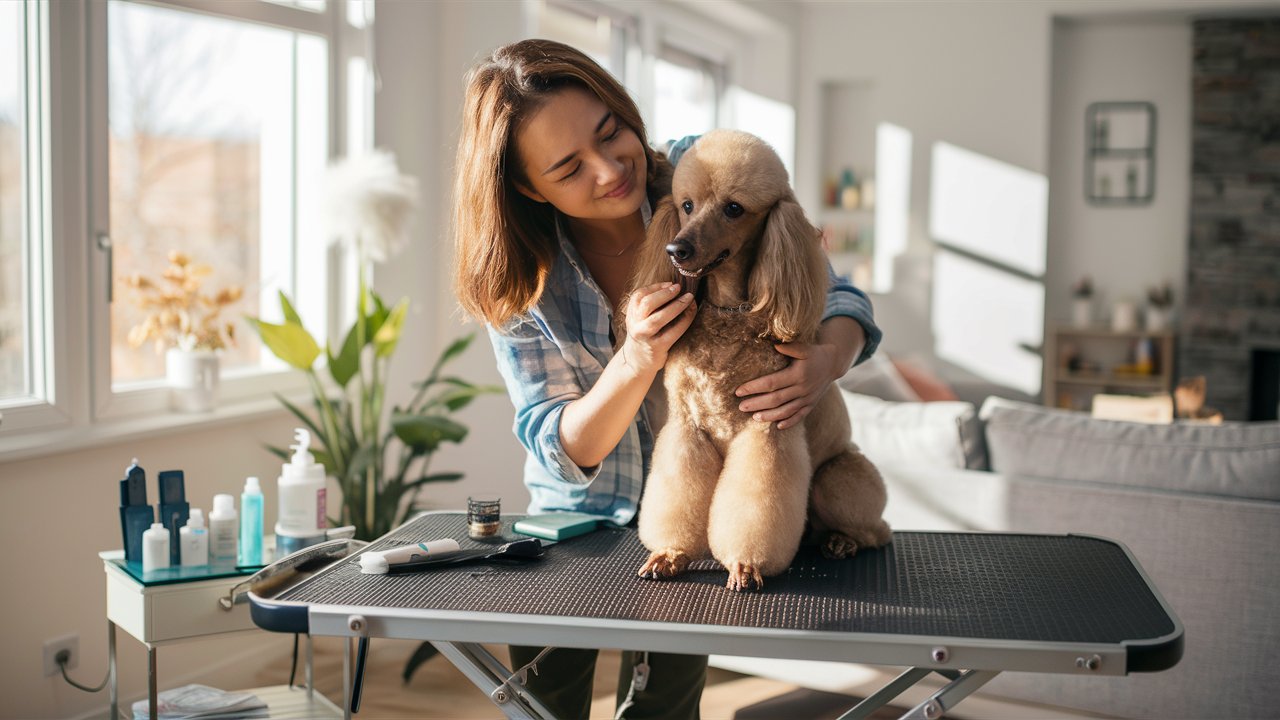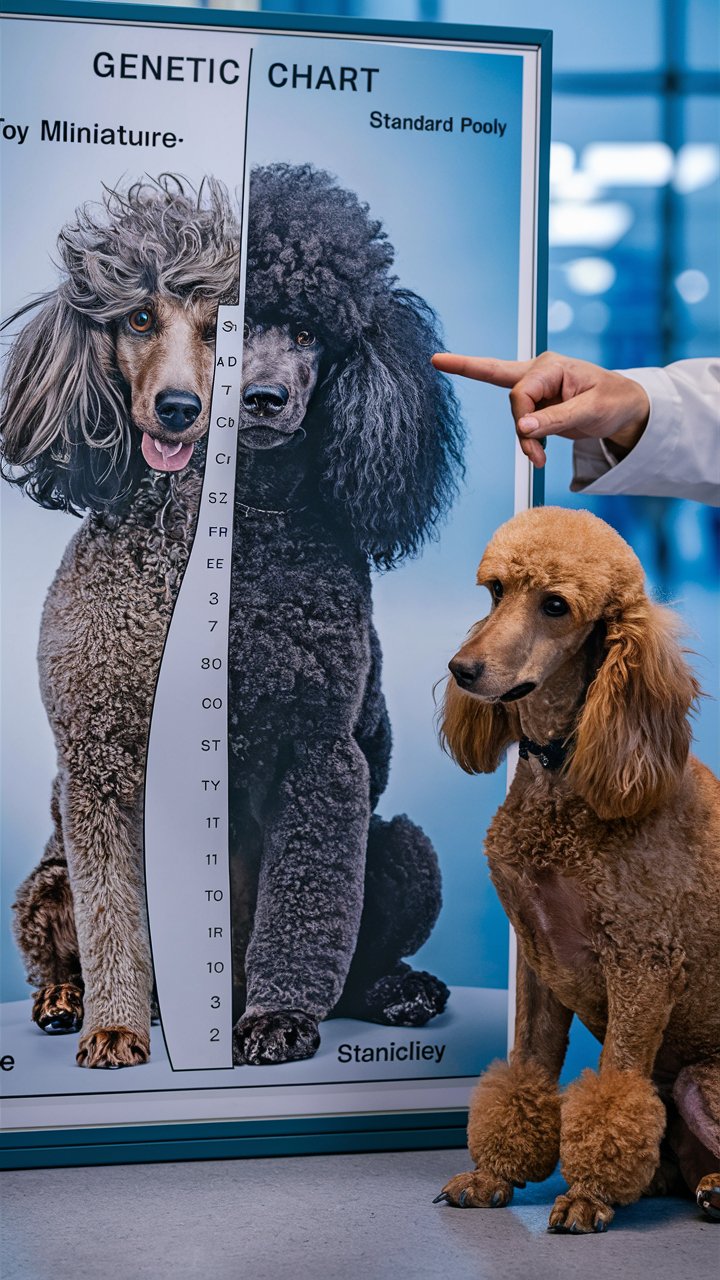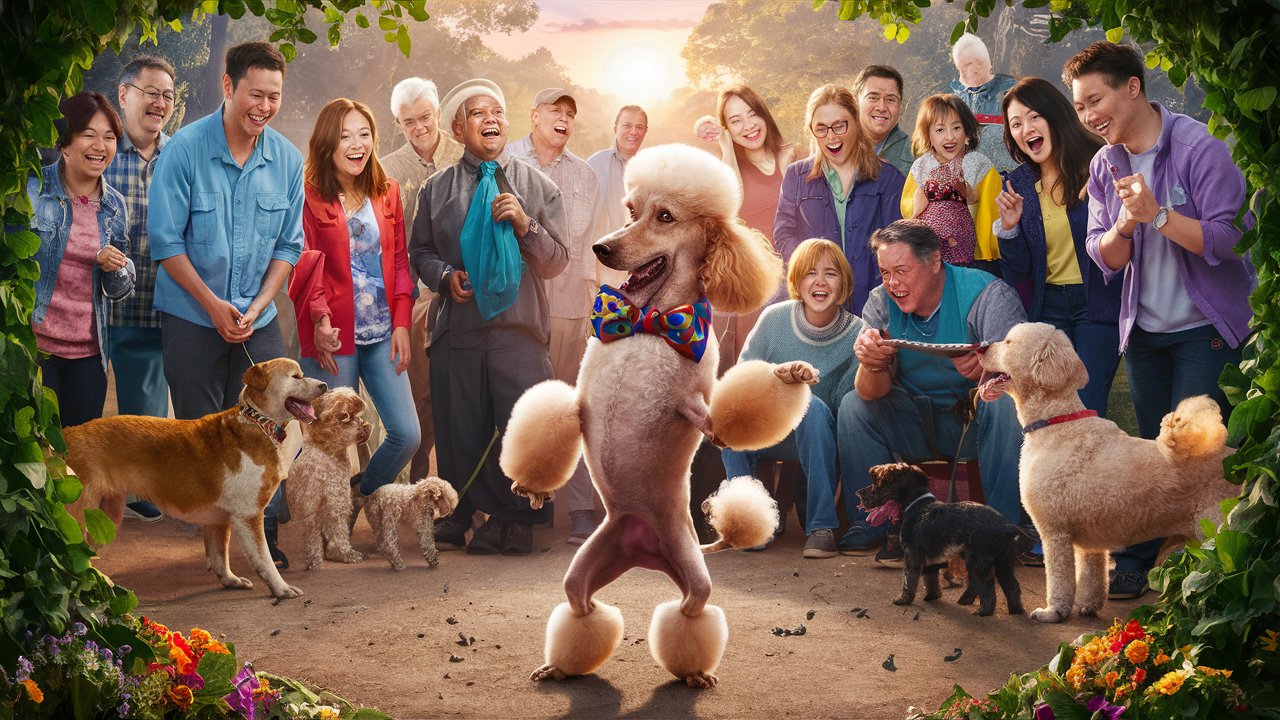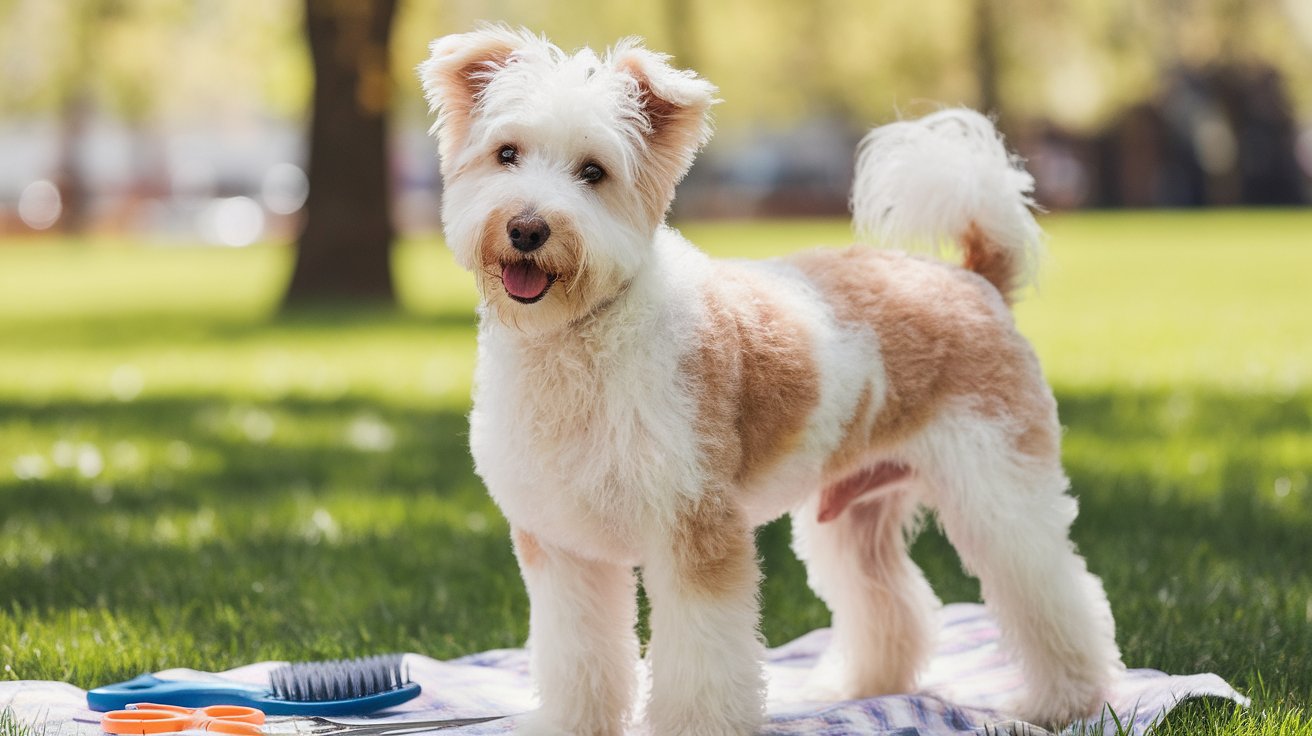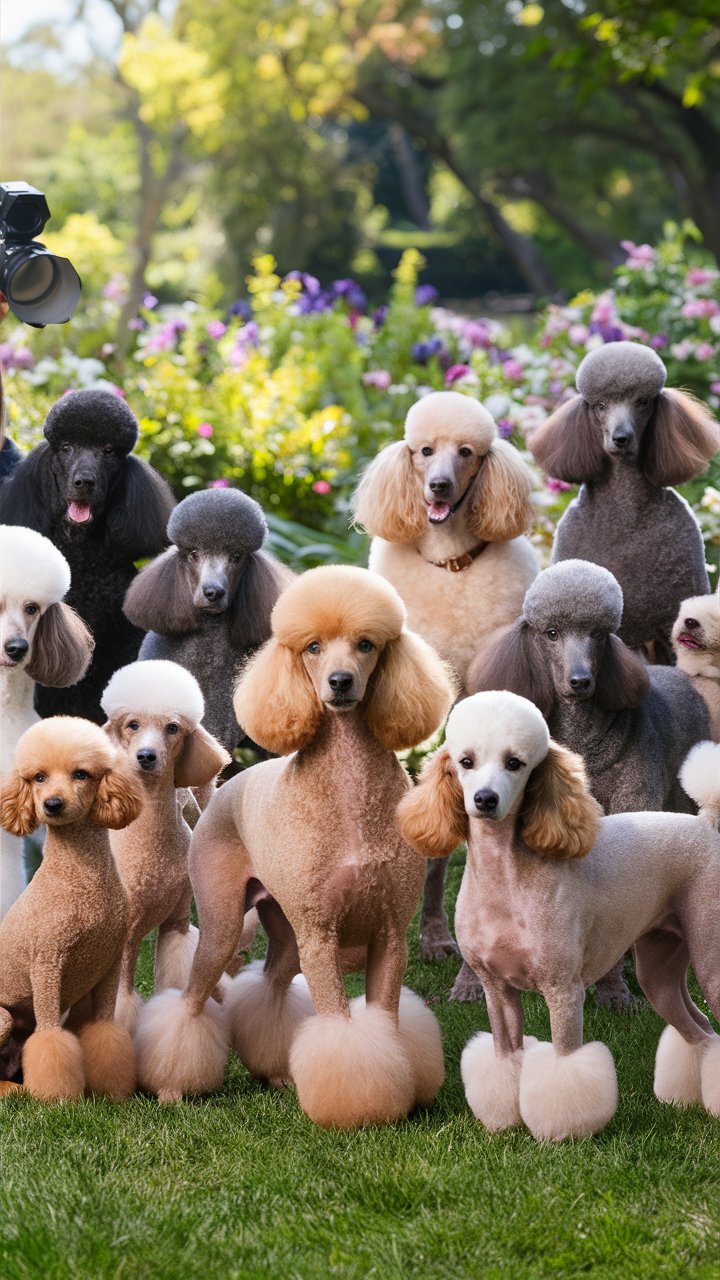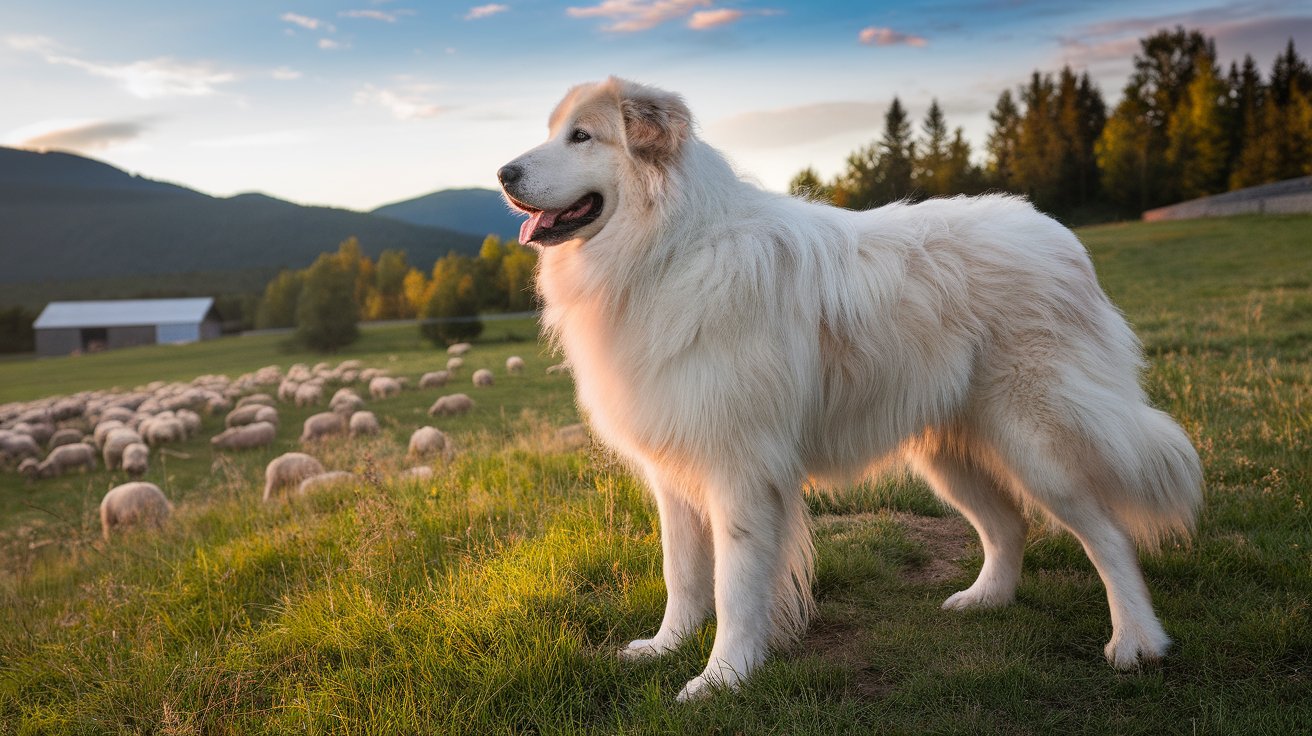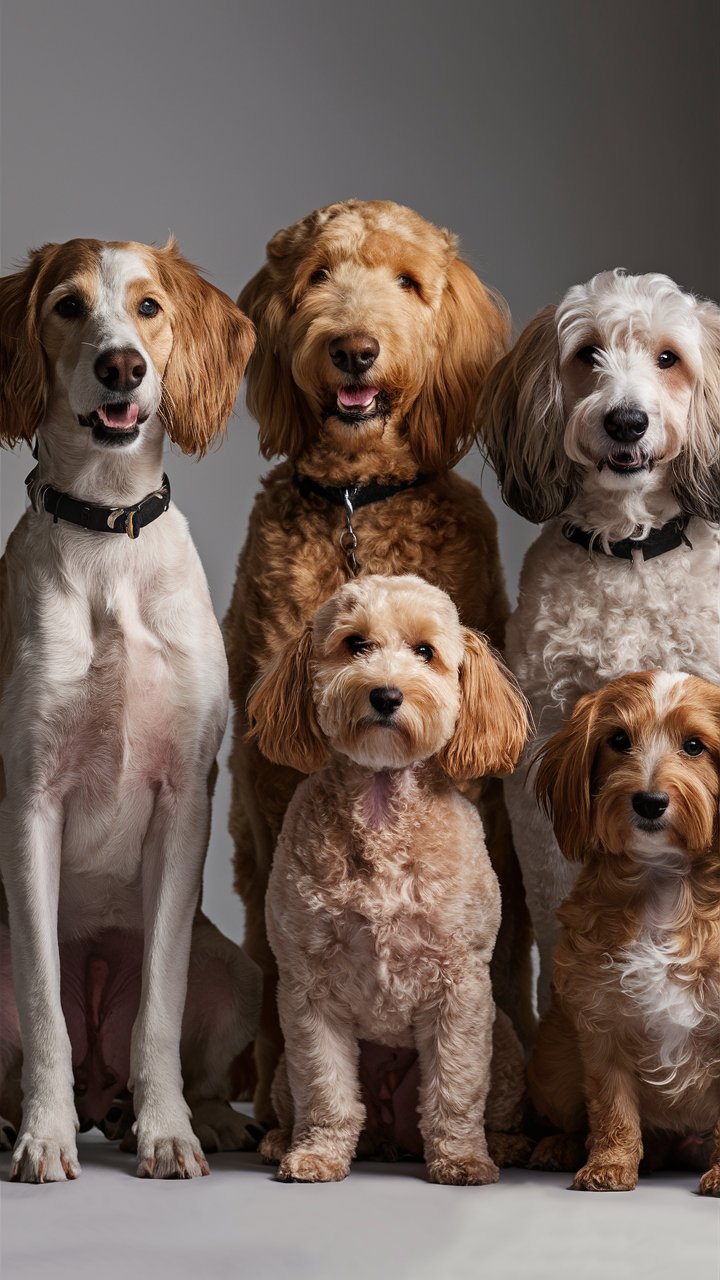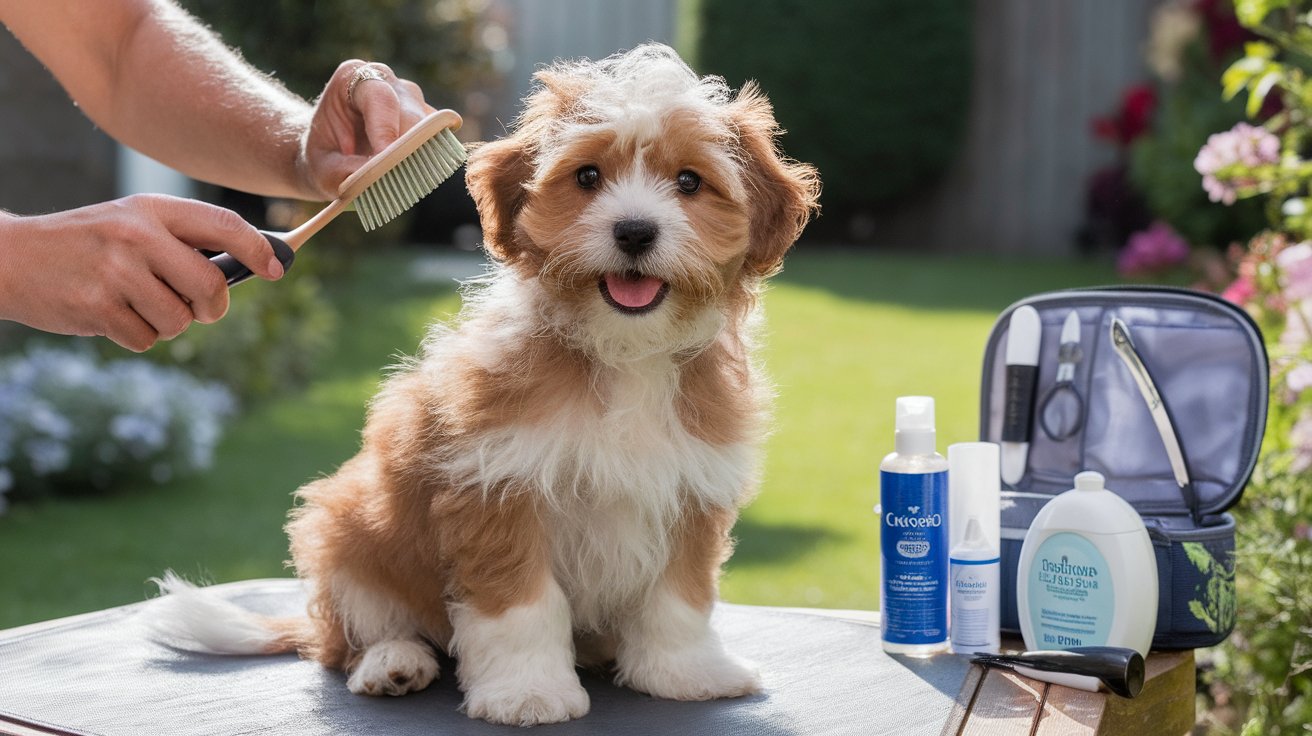Introduction
Poodles are celebrated for their coat diversity, manifesting in forms from tight curls to straight hair. The journey of understanding these coat variations is essential, particularly when a poodle manifests straight hair, a trait that spans across all sizes—toy, miniature, and standard. Initially, many poodles are born with straight or wavy coats, evolving into curls as they mature. This transition largely hinges on genetic factors and the specific breed of your poodle, making early recognition and adaptation to care routines critical.
In nurturing a poodle with straight hair, particular grooming strategies are imperative to prevent tangles and uphold coat health. Unlike their curly counterparts, straight-haired poodles may encounter more knotting, thus necessitating regular use of a soft-bristled brush or wide-toothed comb. Additionally, integrating an understanding of your poodle’s coat type into your grooming regimen ensures their straight hair remains healthy and vibrant. Early identification of coat type is crucial, allowing for tailored grooming and care from puppyhood into their adult phases.
Key Takaways
- Poodle coats vary widely from tight curls to straight hair, with changes often linked to genetic factors and the specific breed, requiring adaptive care routines from an early stage.
- Early identification of a poodle’s coat type is vital for setting appropriate grooming expectations and preparing for future changes as the poodle matures.
- Grooming straight-haired poodles demands specific strategies and tools to prevent tangles and maintain coat health, emphasizing the use of soft-bristled brushes or wide-toothed combs.
- Regular grooming routines are essential for maintaining a healthy coat, involving frequent brushing, appropriate shampoos, and possibly professional grooming sessions.
- A poodle’s coat undergoes significant transformations from puppyhood to adulthood, with coat type potentially shifting from straight to curly, necessitating ongoing monitoring and adjustments in care.
- Nutritional considerations play a crucial role in supporting the health and texture of a poodle’s coat, with a diet rich in essential nutrients being fundamental for those with unique coat types like straight hair.
Exploring Poodle Coat Varieties: From Straight Coat to Curly Coat
Poodles are renowned for their diverse coat types, from tight curls to straight hair. Understanding these variations is essential, especially if your poodle has straight hair. This characteristic can appear in all sizes of poodles—toy and miniature poodles, and standard. Often, poodle puppies are born with straight or wavy coats that gradually become curls as they age. Recognizing whether your poodle will retain its straight hair or transition to curls depends largely on genetic factors and the specific breed of your poodle.
Understanding the Genetics Behind Coat Variations
Poodles exhibit a wide range of coat types due to their complex genetic background. Straight, wavy, or curly—the appearance of a poodle’s coat is influenced by specific genes that dictate hair texture and pattern. For those poodles born with straight hair, genetic factors and the interplay of their parents’ coat types play a significant role. Understanding these genetics can help owners predict potential changes in coat type as their poodle matures, and adapt their care routine accordingly.
Identifying Your Poodle’s Coat Type Early
Identifying the type of coat your poodle has at an early stage is crucial for proper grooming and care. Whether your poodle puppy has a soft puppy coat that is straight or a curly one, recognizing this early will allow you to take the right steps in grooming and maintaining their coat as they grow. This early identification helps in managing expectations and preparing for any changes that may occur as they develop into an adult poodle.
Grooming Tips for Poodles Born with Straight Hair
Managing a poodle with straight hair requires specific grooming strategies to prevent tangles and maintain coat health. Unlike curly poodles, straight-haired types may knot more easily, making regular brushing essential. Using the right tools, like a soft-bristled brush or a wide-toothed comb, can help manage your poodle’s straight or wavy coat effectively. Additionally, understanding the grooming needs specific to your poodle’s type of coat can ensure that their straight hair remains healthy and vibrant. Regular care helps keep their hair looking its best, underscoring why poodles are known for their grooming demands.
Essential Grooming Tips for Poodles with Straight Hair
Choose the Right Tools: For poodles with straight hair, using a soft-bristled brush or a wide-toothed comb is crucial. These tools help prevent damage and efficiently manage knots and tangles.
Maintain a Regular Grooming Schedule: Straight-haired poodles benefit from a consistent grooming routine. Brushing several times a week, regular baths with suitable shampoos, and periodic professional grooming sessions keep their coat in top condition.
Monitor Skin and Coat Health: Regular grooming sessions provide an opportunity to check for skin issues or coat problems. This is vital for early detection and treatment of potential issues.
Nutrition and Hydration: A diet rich in essential fatty acids and adequate water intake can greatly influence the health and texture of your poodle’s straight hair, making it easier to manage and more vibrant.
This list is designed to help owners of straight-haired poodles maintain their pets’ coats effectively, ensuring they remain healthy and look their best.
Best Brushes and Combs for Straight Hair
Choosing the right grooming tools is essential for maintaining a straight-haired poodle’s coat. Brushes with longer, spaced bristles and wide-toothed combs are ideal for detangling without breaking the hair. Regular grooming not only keeps the coat shiny and healthy but also stimulates the skin and helps distribute natural oils throughout the coat, which is crucial for poodles with straight or wavy hair.
Regular Grooming Schedule for Optimal Coat Health
Establishing a regular grooming routine is vital for straight-haired poodles to prevent matting and maintain coat health. Depending on your poodle’s activity level and hair type, grooming may be required several times a week. This routine should include brushing, bathing with appropriate shampoos, and possibly even regular professional grooming sessions to ensure the coat remains smooth, clean, and tangle-free.
Puppy to Adult: The Evolution of a Toy Poodle Coat
A poodle’s coat undergoes significant changes from puppyhood to adulthood. Initially, many poodles are born with straight or somewhat wavy coats, which may develop into curls as they mature. This transformation usually completes by the time they reach 12 to 24 months of age. Monitoring these changes can help poodle owners anticipate their pet’s adult coat type—whether it remains straight, becomes wavy, or transforms into the characteristic curly coat. Being aware of this progression is essential for proper coat care and grooming practices.
Monitoring Coat Changes During Puppy Growth
As poodles transition from puppyhood to adulthood, their coat can change significantly. Owners should monitor these changes closely to adjust care routines as needed. This monitoring can involve taking note of the texture and curliness as the poodle ages, which is especially important for those initially born with straight hair. These observations can inform decisions about diet, health, and grooming to support healthy coat development.
The Impact of Nutrition on Coat Health
Nutrition plays a crucial role in the development of a poodle’s coat from puppy to adult. A diet rich in essential fatty acids, vitamins, and minerals supports healthy hair growth and can influence the final texture of the coat. For poodles, especially those with unusual coat types like straight hair, ensuring they receive a balanced diet tailored to their specific needs is key to maintaining a healthy, vibrant coat.
“The transformation of a poodle’s coat from the soft fuzz of puppyhood to the distinctive curls or sleek straightness of adulthood is a beautiful journey of change. As owners, our role is to guide them through this with the right nutrition and dedicated grooming.” – Cesar Millan
Common Misconceptions About Poodle Hair Types
There are several myths surrounding poodle coats, particularly the notion that all poodles naturally have curly hair. In fact, poodles with straight hair are not as uncommon as some might think. Another common misconception is that straight-haired poodles are less purebred than their curly counterparts. However, coat type variations can occur even within well-documented breed lines due to the diverse genetic makeup of poodles. It’s important for poodle owners to understand that coat type does not determine the purity or health of their beloved pet.
Debunking Myths About Straight-Haired Poodles
It’s time to debunk the myth that straight-haired poodles are any less desirable or pure than their curly-haired counterparts. Education about the natural variety within the breed can help reduce stigma and provide accurate information to potential poodle owners. By understanding that coat type variations are normal, owners can appreciate the unique beauty of their straight-haired poodles without misconceptions.
Promoting Awareness of Coat Diversity
Raising awareness about the diversity of poodle coat types is essential for fostering a better understanding among pet owners and breeders. Highlighting how common different hair types are, including straight, wavy, and curly, can help new owners prepare for the reality of their pet’s potential changes. Additionally, promoting this awareness can aid in better breeding practices that recognize and value the variety within the breed.
[lasso rel=”amazon-29″ id=”5443″]
Conclusion
Poodles are a dog breed celebrated for their incredible coat diversity, from tight curls to a straight coat. This variation is seen across all sizes, from toy and miniature to standard poodles. The evolution of a poodle’s hair, from puppyhood’s softer textures to adult richness, underscores the importance of a dedicated grooming regimen tailored to the coat type—whether maintaining straight-haired poodles or managing the curls. Recognizing and adapting to these changes are essential for ensuring a healthy, vibrant coat that reflects the poodle’s unique genetic makeup.
Raising awareness about the diversity of poodle coat types is critical in enhancing understanding and appreciation within the poodle community. Whether it’s a toy poodle or a standard poodle, each has unique characteristics that, with proper care and understanding, can flourish. Debunking myths around straight-haired poodles being less pure and promoting knowledge about types of poodle hair can foster a more informed and inclusive poodle-loving community, ensuring that these beloved pets receive the love and care they deserve.

